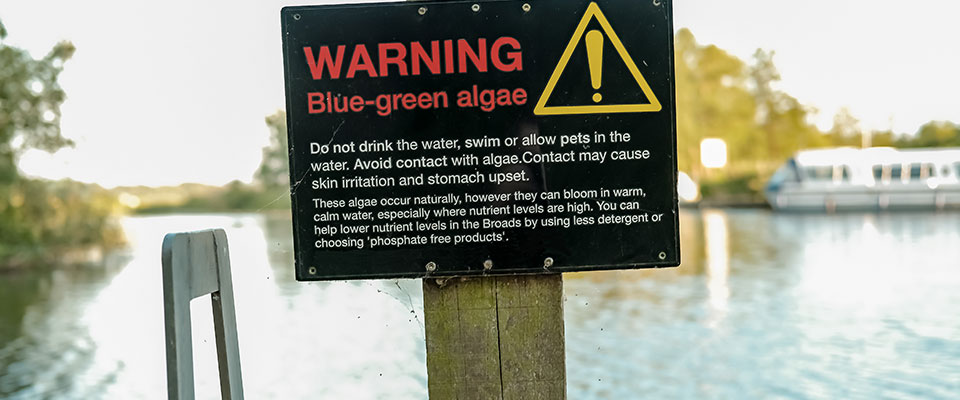
Reports of blue-green algae in Kansas waterways have been coming in unusually early this year.
Blue-green algae showing up early in Kansas waterways
Warm temps, rain have hastened presence in some areas
At a glance: Reports of harmful blue-green algae in Kansas waterways have been coming in unusually early this year, possibly a result of warmer late-spring weather and more rain events, according to a Kansas State University fisheries and aquatics specialist.
More information: Joe Gerken, 785-532-1418, gerkenje@ksu.edu
Related: Producing Fish and Wildlife from Kansas Ponds | Public Health Advisories for Kansas Lakes Due to Blue-Green Algae
June 14, 2024
By Pat Melgares, K-State Research and Extension news service
MANHATTAN, Kan. – Reports of harmful blue-green algae in Kansas waterways have been coming in unusually early this year, possibly a result of warmer late-spring weather and more rain events, according to a Kansas State University fisheries and aquatics specialist.
Blue-green algae are not algae at all, but rather a type of bacteria called cyanobacteria. The bacteria thrive in warm, nutrient-rich water and -- under the right conditions -- can form blooms, called harmful algal blooms, or HAB.
Certain varieties of blue-green algae can produce toxins that are linked to illness in humans and animals.
“I have already seen harmful algal blooms in Kansas this year, and the Kansas Department of Health and Environment has several advisories out already,” said Joe Gerken, the fisheries and aquatics specialist with K-State Research and Extension.
Gerken said the HAB season seems to be starting earlier each year. Blooms typically occur when water temperatures are above 75 degrees Fahrenheit, although there are some cool season species.
“It is more common for blooms to occur thoughout the summer months, with a peak in August,” Gerken said.
In water, blue-green algal blooms are often described as looking like spilled green paint, or sometimes like pea soup. Blooms are not always large, and may cover only a small portion of the waterway with little visible algae present. Blooms can produce a swampy odor when the cells break down.
Humans and animals can become sick from harmful algal blooms if they have contact with water, or breathe in airborne droplets. Some of the signs of HAB illness include vomiting, diarrhea, rash, eye irritation, cough, sore throat and headache. Symptoms may begin as quickly as hours after exposure, or up to two days.
In addition, water contaminated with HAB may cause aquatic life to die. Landowners are encouraged to maintain ponds and other waterways. Gerken said the Kansas Department of Wildlife and Parks has a publication that provides guidance on producing fish and wildlife in Kansas ponds.
Those who suspect they – or their pets -- may have become ill due to exposure with harmful algal blooms, should seek the advice of a medical professional or veterinarian.
More information on HAB and waterways in Kansas with suspected or confirmed contamination is available online from the Kansas Department of Health and Environment.
***

K‑State Research and Extension is a short name for the Kansas State University Agricultural Experiment Station and Cooperative Extension Service, a program designed to generate and distribute useful knowledge for the well‑being of Kansans. Supported by county, state, federal and private funds, the program has county extension offices, experiment fields, area extension offices and regional research centers statewide. Its headquarters is on the K‑State campus in Manhattan. For more information, visit www.ksre.ksu.edu. K-State Research and Extension is an equal opportunity provider and employer.